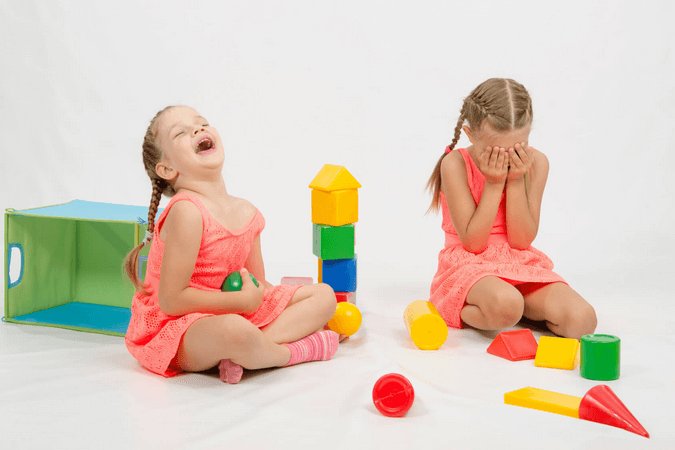Table of contents
This blog post was last updated on October 10, 2019 to include new information about Toys R Us selling products through eCommerce and Target.


Toys “R” Us Teams Up With Target For eCommerce Sales
Toys “R” Us recently launched an updated eCommerce store before opening new retail stores later this year. This new website includes many engaging features designed to enhance customers’ experiences, such as toy lists, do-it-yourself activity ideas, and more. However, to complete a purchase, customers must venture elsewhere. While the website delivers a fresh new experience, visitors must complete the transaction on Target’s website. This is the most prominent part of Toys “R” Us’s new partnership with Target. Target is also handling order fulfillment. Richard Barry, CEO of Tru Kids, the parent company that Toys “R” Us is nested under, called Target the “ideal retailer” to complete these orders. In addition to lifting the burden of fulfillment off of Toys “R” Us’s shoulders, though, Target has effectively gained significant traction in the toy market, which recently became an increased area of focus. This partnership could help them to compete more effectively with Amazon, especially as the holidays approach and toy sales continue ramping up.Toys “R” Us Reopens With a New Experiential Twist on Its Traditional Concept
Despite its closure last year, Toys “R” Us will again brighten the lives of toy-hungry children. But not in the same way that it did for children of generations past. While Toys “R” Us will still sell toys, it won’t be the big box toy retailer that we’ve all grown accustomed to. In addition to selling toys and other merchandise for children, Toys “R” Us will add a new experiential emphasis to their model. This effort follows the ongoing retail trend to make visits more about the overall experience and drive brand loyalty, than simply purchasing products. Rather than aisles of toys as far as the eye can see, new Toys “R” Us stores will focus on highlighting particular brands. These brands will be granted spaces within the store, and the opportunity to demonstrate their toys,as well as hold events. Additionally, Toys “R” Us will also hold STEAM learning sessions to educate children in a fun, engaging environment. At the moment, only two have been announced— one in Paramus, New Jersey and one in Houston, Texas— but more may follow after they open in November.Why the sudden closure?
Well, it's not actually that sudden. You’ve probably heard the sad news already—every child over the age of 20’s favorite toy store Toys “R” Us is closing their doors by June of 2018, the latest. Good question. Every expert economist and business professional has a different opinion as to why Toys “R” Us has reached the point of no return. Some – including Toys “R” Us itself – point to retail giants Walmart and Target, as well as the one-stop online-shop Amazon, for taking business away with a fast and convenient platform that allows shoppers to purchase the same products, but from the comfort of their own home. Others point to Toys “R” Us’s inability to pay off its massive debt, which it has been suffocating it for some years now. A select few are even putting Geoffrey the Giraffe on blast, framing the store’s creepy and ominously silent mascot as the true culprit behind Toys “R” Us’s demise.So? Who’s Right?
In a way, all of the above are correct (yes, even the giraffe haters). However, wouldn’t the real reason behind Toys R Us closing answer the question as to why they fell in debt in the first place? Why they let Amazon and retail giants kill their revenue? Why they held on to a mascot so unloved and rejected by every man, woman and child in America? Everyone seems to be missing the underlying lesson that, if learned in time, would have made the whole situation completely avoidable. The real reason why Toys “R” Us is closing is due to their refusal to change. Yes – it’s really that simple.Remember Blockbuster?
It’s the same reason why other beloved 80’s and 90’s chains and companies like Blockbuster bit the dust. Blockbuster laughed in Netflix’s face when the developing streaming service offered to become partners. Online streaming? Oh, please. As if people would ever get tired of taking the time to head over to the nearest Blockbuster, and pay crazy late fees for a small selection of sticky, barely-usable DVDs. Who would want to stream whatever they want, whenever they want, from the comfort of their own home? Netflix is a verb now. There’s your answer in a nutshell. When any business, no matter its size or popularity, refuses to adapt to new developments and advancements within their industry, it is actively signing its own death certificate. Other businesses receptive to the same changes adapt, overcome, and overthrow the competition. Take a note from Toys “R” Us’s competitors, and prepare your business to greet all developments within your industry with these simple steps:Increase Focus on Speed and Convenience
How does Toys “R” Us sell their products? From inside freezing warehouses, all 3,000 square feet full of toys, hyped-up kids and their worn-out parents, ready to pass out after a long day of work. How does Amazon sell the same toys? Shoppers buy anything they want online, whenever they want, from the comfort of their own home. Businesses who put all their efforts into shaping their customer’s experience with increased speed and convenience are consistently the most successful in every industry. This is what customers have come to expect in today’s day and age, which Toys “R” Us seemingly failed to realize.Know Your Market, and Dominate It!
“Hey, Toys “R” Us sold toys online too!” They sure did, and they were terrible at it. The key difference: Target, Walmart, and Amazon offer shoppers the ability to buy literally anything they want through their online services, along with an even larger selection of toys than that offered by Toys “R” Us, all with speed and convenience for their customers that Toys “R” Us could not or would not compete against. Why would you go on Toys “R” Us to shop for toys, when customers can purchase from a wider variety of toys along with anything and everything they can imagine at the same time? Why use two separate login accounts, complete two profile information forms, to purchase the same products? Wouldn’t you rather lump your purchases into one? These are the kinds of questions Toys “R” Us should’ve been answering for their customers. Instead, Toys “R” Us turned a blind eye when customers began to discover the joys of online shopping, which left them in a vulnerable position that their online and retail competitors quickly took advantage of. Toys “R” US should have closed their stores long ago, voluntarily, and focused all their efforts into coming up with new and innovative strategies to dominate the online toy market, before their competitors had the chance. Not only would they have had the chance to seize domination over online toy sales, but they would have saved a huge amount of time and money in the process. In short...Cut the Dead Weight!
Try to remember just how enormous those loud, chilly warehouses were. Did they really need all that space? Think about how many trillions of dollars they could have saved, had they closed their stores by choice. The continued and pointless use of Toys “R” Us warehouses reflected just how dependent their business model remained on nostalgia and novelty, right up to the bitter end. Had they acknowledged their stores as the unbearably heavy and undoubtedly-dead weight they were, they could have saved vast amounts of capital on:- Commercial Mortgage Costs
- Labor Costs
- Shipping and Packaging Costs






